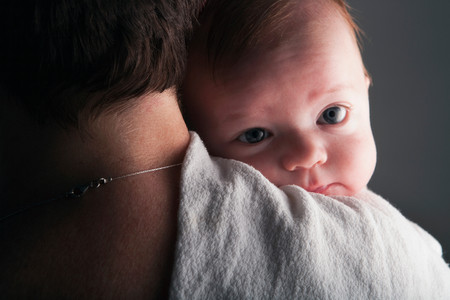Understanding Birth Order Theory
When we talk about family and childhood in America, birth order theory often comes up as a way to explain why siblings can be so different from each other. This idea has shaped the way many people think about their own families and their relationships with brothers and sisters.
What Is Birth Order Theory?
Birth order theory suggests that a child’s position in the family—whether they are the oldest, middle, youngest, or an only child—plays a significant role in shaping their personality and behavior. The theory was first introduced by Austrian psychologist Alfred Adler in the early 1900s. Adler believed that because each sibling is born into a unique family environment, they develop distinct traits and ways of interacting with others.
Origins and Development
Alfred Adler was one of the first to recognize how being an oldest, middle, youngest, or only child could influence a person’s sense of self and how they relate to others. Over time, researchers in the United States have built on Adler’s ideas to explore how these differences show up in American families.
Common Birth Order Positions and Traits
| Birth Order | Common Traits |
|---|---|
| Oldest Child | Responsible, organized, natural leader |
| Middle Child | Peacemaker, adaptable, sometimes feels overlooked |
| Youngest Child | Outgoing, attention-seeking, charming |
| Only Child | Mature for their age, self-motivated, comfortable with adults |
How Americans View Family Dynamics Through Birth Order
In American culture, it’s common for parents and even teachers to notice patterns that seem to fit birth order theory. For example, parents might expect the oldest child to help with chores or take care of younger siblings. Middle children might be seen as easygoing or good at compromising. The youngest may get more attention or be seen as the “baby” of the family. Only children often receive a lot of adult attention and may be expected to act more mature.
The Role of Birth Order in Sibling Relationships
Birth order doesn’t just affect individual personality—it can also shape how siblings interact with each other. Rivalries, alliances, and roles within the family can all be influenced by where a child falls in the birth order lineup. Understanding these patterns helps families navigate challenges and appreciate each member’s strengths.
2. Personality Traits Associated with Each Birth Order
Every child is unique, but psychologists and family experts in the U.S. have noticed some common personality patterns based on birth order. Understanding these traits can help parents, teachers, and even siblings appreciate each other’s strengths and challenges.
Common Birth Order Personality Traits
| Birth Order | Typical Personality Traits |
|---|---|
| Firstborn | Responsible, organized, dependable, often leaders, perfectionistic, may seek approval from adults |
| Middle Child | Peacemaker, adaptable, social, feels left out sometimes, flexible, good at negotiating and compromising |
| Youngest | Outgoing, charming, attention-seeking, sometimes more rebellious, fun-loving, creative |
| Only Child | Mature for their age, independent, comfortable around adults, conscientious, sometimes perfectionistic or sensitive to criticism |
Why Do These Patterns Happen?
In many American families, firstborns often take on leadership roles because they are the “trailblazers” for their younger siblings. Parents might expect a lot from them and give them more responsibilities. Middle children usually learn to be flexible and diplomatic as they navigate between older and younger siblings. The youngest kids often get a little more freedom and attention because parents may be less strict by the time the last child arrives. Only children spend most of their time with adults, which can make them mature but also sometimes feel pressure to be perfect.
It’s Not Set in Stone!
Of course, not every child fits these descriptions perfectly. Family dynamics, culture, parenting style, and even big gaps in age between siblings can all influence how birth order affects personality.

3. Sibling Relationships: Cooperation, Competition, and Conflict
When it comes to growing up with brothers or sisters, birth order can play a huge role in shaping how siblings interact with each other. From sharing toys to fighting over attention, the way kids relate to their siblings often has a lot to do with whether they’re the oldest, middle, youngest, or even an only child.
Cooperation and Teamwork Among Siblings
Older siblings often take on leadership roles in family activities, guiding younger brothers or sisters through games or homework. They may act as mini-parents, helping out and teaching new skills. Younger siblings might rely on older ones for support and protection, which can create strong emotional bonds and trust between them. However, cooperation isn’t always automatic—it can depend on personality differences and parenting style too.
Competition and Rivalry
It’s normal for siblings to compete—sometimes for toys, sometimes for praise from parents. This rivalry can be healthy if it encourages kids to try their best, but it can also lead to jealousy or arguments. The level and type of competition can change depending on birth order:
| Birth Order | Common Forms of Competition |
|---|---|
| Firstborn | Aim to maintain their “special” status; may compete academically or in sports. |
| Middle Child | Might compete for parental attention; often feel the need to stand out. |
| Youngest | Tend to compete by being charming or seeking attention in creative ways. |
Conflict: Why Siblings Argue
Siblings fight for lots of reasons—differences in interests, perceived unfairness, or simply because they spend so much time together. Birth order can influence how these conflicts play out. For example, firstborns might be more rule-oriented and want things done their way, while younger siblings may push back or test boundaries.
Common Triggers of Sibling Conflict by Birth Order
- Firstborns: May feel responsible for younger siblings but resent having extra duties.
- Middle Children: Sometimes feel overlooked and may act out to get noticed.
- Youngest: Can feel frustrated if not taken seriously by older siblings.
The Emotional Bond Between Siblings
Despite the ups and downs, sibling relationships are often among the longest-lasting connections people have in life. These bonds start forming in childhood and are shaped by everyday experiences—playing together, solving problems, or even working through disagreements. Birth order doesn’t decide everything about sibling relationships, but it’s one piece of the puzzle that helps explain why brothers and sisters relate the way they do.
4. Long-Term Effects: Birth Order’s Influence in Adulthood
How Birth Order Shapes Adult Relationships
Birth order doesn’t just influence us as kids—it can also play a big role in the way we connect with others as adults. For example, firstborns often take on leadership roles and may feel more comfortable being in charge or organizing group activities. Middle children sometimes become skilled peacemakers, able to see multiple sides of a situation, which can help them build strong friendships or work well on teams. Youngest siblings might be more easygoing and sociable, using humor or charm to make new friends.
| Birth Order | Common Relationship Traits |
|---|---|
| Firstborn | Responsible, organized, protective |
| Middle Child | Flexible, diplomatic, social |
| Youngest | Outgoing, creative, attention-seeking |
| Only Child | Mature, independent, self-reliant |
Career Choices and Workplace Dynamics
The influence of birth order can also show up at work. In American culture, where individuality and ambition are valued, firstborns may be drawn to careers with clear paths for advancement or leadership positions—like management, law, or teaching. Middle children might thrive in roles that require negotiation or teamwork, such as human resources or counseling. Youngest siblings often enjoy creative fields like marketing or entertainment. Only children tend to feel comfortable working independently and may pursue careers that allow for autonomy.
| Birth Order | Potential Career Strengths | Popular Career Paths in the U.S. |
|---|---|---|
| Firstborn | Leadership, reliability | Manager, lawyer, teacher |
| Middle Child | Mediation, teamwork | Counselor, mediator, HR specialist |
| Youngest | Creativity, adaptability | Designer, performer, marketer |
| Only Child | Independence, focus | Researcher, entrepreneur, writer |
The Role of Birth Order in Personal Identity in America
A person’s spot in the family lineup can shape how they see themselves and how they fit into American society. Firstborns may identify strongly with being responsible or dependable. Middle children often see themselves as adaptable and skilled at navigating group dynamics. Youngest siblings frequently embrace their reputation as the “fun one” or the “baby” of the family even as adults. Only children might develop a strong sense of independence and self-motivation because they’re used to handling things on their own.
The impact of birth order is unique for everyone and can be influenced by factors like family size, parenting style, and cultural expectations. But understanding these patterns can help us appreciate our strengths—and those of our siblings—as we move through life.
5. Cultural Perspectives and Modern Views
How American Culture Shapes Birth Order Perceptions
In the United States, cultural values such as independence, achievement, and equality shape how families and researchers view birth order effects. Traditionally, American parents may expect firstborns to be responsible leaders, middle children to be peacemakers or attention-seekers, and youngest children to be more carefree. These beliefs are reinforced by popular media, parenting books, and even jokes about “typical” sibling behavior.
Table: Common Birth Order Stereotypes in American Culture
| Birth Order | Stereotype | Cultural Expectation |
|---|---|---|
| Firstborn | Leader, high-achiever, responsible | Set a good example for siblings |
| Middle Child | Peacemaker, overlooked, adaptable | Find their own niche in the family |
| Youngest Child | Outgoing, charming, spoiled | The “baby” of the family; gets more attention |
| Only Child | Mature, perfectionist, lonely | Acts like a “little adult” |
Evolving Family Structures and New Research Insights
Modern American families often look different from those of previous generations. Blended families, single-parent households, and families with wider age gaps between siblings can all influence how birth order plays out. Recent research shows that while some trends hold true—like firstborns tending to take on leadership roles—personality is shaped by many factors beyond just birth order.
Key Factors Influencing Sibling Relationships Today:
- Diversity in Family Forms: Step-siblings, half-siblings, and adopted siblings can change traditional birth order dynamics.
- Cultural Shifts: There’s a greater emphasis on individual strengths rather than strict roles based on birth order.
- Parental Attention: Quality time with each child matters more than their position in the family lineup.
- Technology: Social media and digital communication add new layers to sibling connections and rivalries.
What This Means for Families Today
Understanding birth order can help parents support their children’s unique personalities and needs. However, its important to remember that every child is different. American culture continues to value individuality and self-expression, encouraging kids to grow beyond stereotypes associated with their place in the family.


